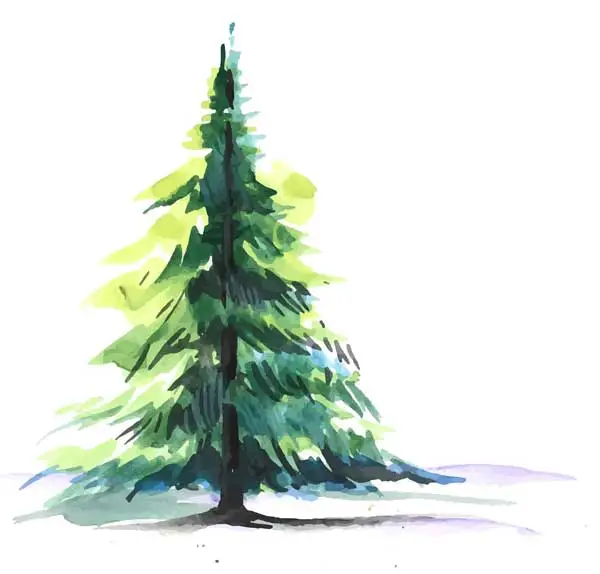Timber Management Plans
A thorough forest management plan is a landowner's tool for managing timber harvest, reforestation, watershed and wildlife protection, and general forestry best practices in compliance with state regulations.A thorough forest management plan is a landowner's tool to manage their timber harvest, reforestation, watershed and wildlife protections, and general forestry best practices in compliance with State rules.
A quality management plan has several components:
- Accurately identify, describe, and quantify existing components of the property.
- Identify landowner goals and objectives (see table below).
- Identify and acknowledge constraints.
- Describe actionable steps that will result in an outcome consistent with the identified goals and objectives.
- Create maps.
- Opportunity to apply for third-party certification.
- Opportunity to apply for external funding*.
- * Funding may be available from state and federal agencies to offset the cost of hiring a consultant to prepare a plan for you.
When a landowner has a good management plan, they can make informed decisions that allow them to be efficient and effective with their time and resources. Through my years of forest management experience, I have developed the skills and knowledge necessary to produce quality forest management plans. Woodward Forestry can take the lead in developing the plan or work with a client who just needs help filling in the gaps.
Woodward Forestry can take the lead and help develop a solid, comprehensive forest management plan, or simply a plan to fill in any gaps that may exist.
With decades of forest management experience, I am able to guide forest landowners through the state's complex regulations and compliance requirements, efficiently and successfully.

| GOAL | SAMPLE OBJECTIVE |
|---|---|
| Produce income. You may need income immediately, on a regular basis (yearly or every few years), or for specific, future needs (such as retirement, capital improvements, trust funds, or a child’s education). | Net $15,000 over a 5-year period (average $3,000/year) to cover property taxes, equipment, supplies and other annual expenses. |
| Produce forest products. You may want to use particular forest products from your tree farms (such as lumber, posts, shakes or shingles, firewood, rock, or specialty products like boughs and truffles). | Produce 3 cords of firewood/year. |
| Protect soil and water resources. This is essential to maintaining your land’s productivity. Proper planning will protect these resources during management operations. | Replace invasive canary grass along creek with native vegetation. |
| Provide recreational use. For many landowners, family recreational activities, such as camping, hiking, hunting, or bird watching, are important property uses. You can enhance the recreational value of your property by improving access, building trails, or attracting wildlife. | Develop new footpath from creek to southeast corner. |
| Enhance wildlife habitat. You may be able to enhance wildlife populations through certain forest management activities. | Maintain and improve habitat for songbirds and deer. |
Forestry practices in Oregon are regulated by the Oregon Department of Forestry (ODF) and follow the guidelines set forth in the Oregon Forest Practices Act. The state's forestry practices aim to balance the economic, environmental, and social aspects of forest management.
Some key aspects of Oregon's forest practices include:
Sustainable forest management: Oregon's forest practices emphasize the sustainable management of forests to ensure long-term health and productivity while maintaining ecological diversity and wildlife habitat.
Harvesting techniques: Forestry practices in Oregon include a variety of harvesting techniques, such as clearcutting, selective cutting, and thinning, depending on the forest type and management objectives.
Reforestation: After harvest, reforestation is an important aspect of forest management in Oregon. It involves replanting harvested areas to maintain the productivity and health of the forest.
Watershed Protection: Oregon forestry practices emphasize the protection of water quality and aquatic habitats through measures such as stream buffer zones, erosion control, and best management practices for water management.
Wildlife Conservation: Forest management in Oregon considers the conservation of wildlife habitat and biodiversity by promoting practices that maintain or enhance the ecological value of forests.
The Private Forest Accord ∤ (PDF Report) is a compromise agreement between representatives of Oregon's timber industry, small forest landowners, and prominent conservation and fishing organizations to amend portions of the Oregon Forest Practices Act (OFPA) and Forest Practices Rules in ways that expand protections for fish and amphibians. The amendments to the OFPA are designed to avoid, minimize, and mitigate the impacts of logging and other forest management activities on private forestlands on these species and the aquatic habitats on which they depend.

Woodward Forestry can help you navigate the new rules by:
- Riparian Buffer Installation
- Riparian Surveys
- Road Condition Assessments
For more information about forestry practices in Oregon, visit the following links:
Oregon Department of Forestry: Official website of the Oregon Department of Forestry, providing information on regulations, practices, and resources related to forestry in Oregon. (Oregon Department of Forestry)
Oregon Forest Practices Act Rules: A comprehensive guide to the rules and regulations governing forest practices in Oregon. (Forest Practice Administrative Rules and the Oregon Forest Practices Act - 2024)
